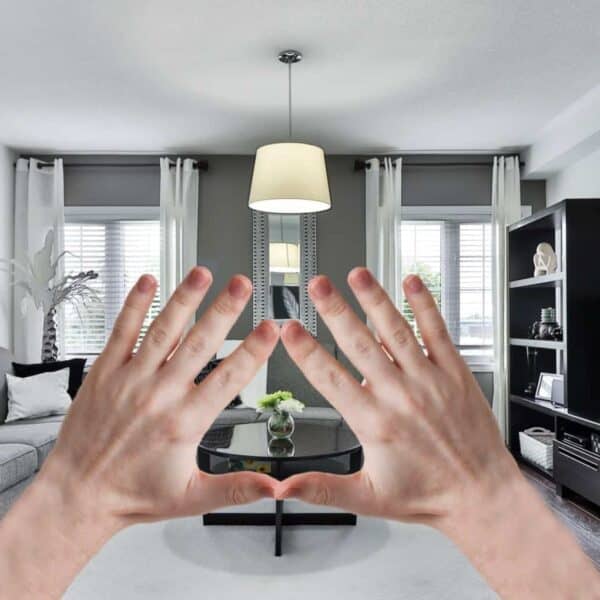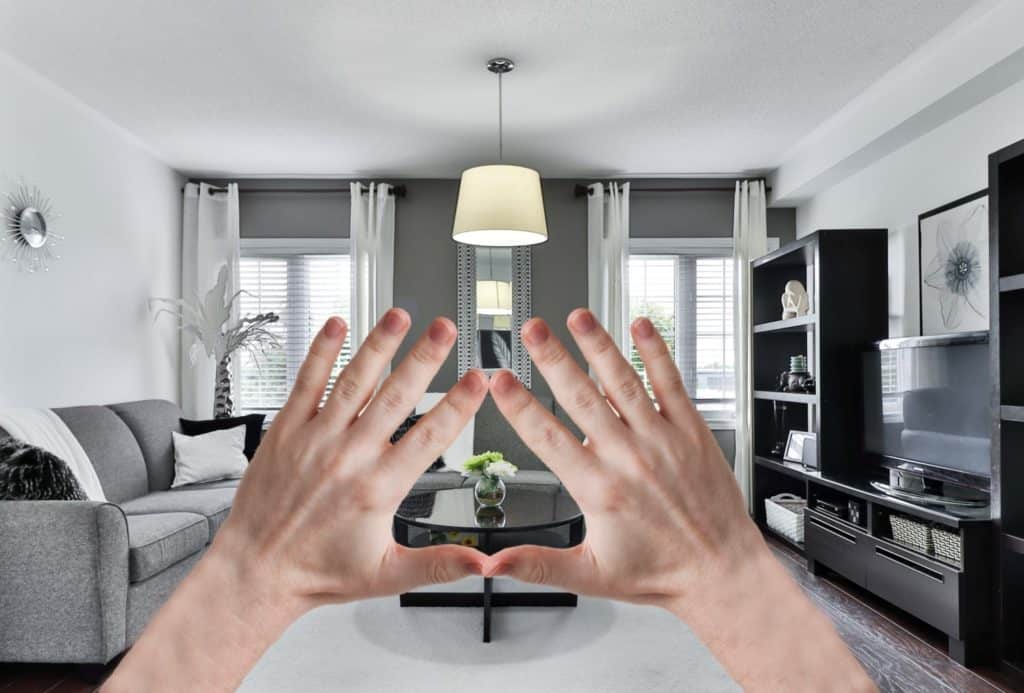
What is Ocular Dominance?
November 20, 2020

Just about everyone has a dominant eye, which typically relays more accurate and precise visual information from the eye to the visual system of the brain. This makes it the “preferred” eye, especially when individually comparing the two eyes. Even if both eyes read the same line on the eye chart, the dominant eye will still be perceived as seeing better compared to the non-dominant eye.
The intensity or degree of ocular dominance varies from person to person. Some people can alternate which eye is dominant for different tasks. Other people have a very strong preference for the dominant eye. Certain eye conditions affecting vision, such as strabismus, amblyopia, and cataracts, can also hinder or disrupt eye dominance.
Determining Ocular Dominance
There are two common methods that you can try at home to identify your dominant eye.
Triangle Method

1. Make a triangle with your hands (index fingers touching and thumbs touching).
2. Extend your arms and place a distant object into focus in the middle of the triangle.
3. Close your left eye.
– If the object is still in the center of the triangle, you are right eye dominant.
– If the object has shifted or is no longer in the center of the triangle, you are left eye dominant.
4. When alternating closing eyes, the dominant eye is the one that is open when the distant object is in the center of the triangle.
Thumb Method

1. Extend an arm with the thumb in a “thumbs-up” position.
2. Use the thumb to cover a distant object.
3. Alternate closing eyes.
– The dominant eye is the one that is open when the distant object is covered by the thumb.
– If the object shifts or is no longer blocked by the thumb, that open eye is the non-dominant.
Neurological Development
During normal ocular and neurological development in the womb, the eye dominance is hardwired in specific ocular dominance columns of the visual cortex. Different groups of ocular dominance columns determine the degree of monocular dominance versus binocularity. Further development continues after birth as the dominance is refined.
Amblyopia can interfere with the development of eye dominance during the early, and critical, years of development. If the brain is not receiving a good signal from an eye, the ocular dominance columns of the visual cortex can actually shrink.
Ocular Dominance and Handedness
Most people assume if they are right-handed, they must be right eye dominant. Surprisingly, eye dominance and handedness do not always correlate. While it may be the same for the majority of people, handedness is not always indicative of eye dominance.
Applying Ocular Dominance
Ocular dominance plays a role in every day life. Any time both eyes are open, the dominant eye is responsible for transmitting the clearest image to the visual cortex for analysis.
When fitting multifocal or monovision contact lenses, the dominant eye always prefers to see clear distance vision. If the prescription needs to be modified to help near vision, the adjustments for near vision are made to the non-dominant eye.
Rifle shooting utilizes both eye dominance and handedness. For example, a right-handed person would shoot with the rifle against the right shoulder and use the right eye to view the target through the scope. If a person is right-handed, but left eye dominant, it may be difficult to use the right eye in the scope. Some professional target shooters recommend keeping both eyes open to enhance depth perception and field of vision, while others suggest closing the non-dominant eye just before shooting.
Photographers use their dominant eye when using a camera (the traditional kind that isn’t part of a cell phone). Aligning the dominant eye through the viewfinder will provide a clear, more accurate image of what the picture will actually look like.
The next time you need a distraction while staring at your computer during work, look in the distance and determine your dominant eye. It might be the next topic of conversation at dinner!